







As summer draws to a close, it’s time to get cracking on a new year of gardening and really get our hands dirty. In this edition of CANNATalk, we dig deep and discover what lies beneath—getting the lowdown on the fascinating world of roots and root hairs, learning about the insidious and destructive fungal disease known as fusarium wilt, and turning the spotlight on your plant’s new best friend, CANNAZYM!
Our latest issue also features some great advice on how to grow microgreens, we discover how to transform an empty wall or fence into a fabulous vertical garden in the blink of an eye, and we uncover some bizarre but true facts about soil. As always, if you have a question, query, or comment—please get in touch! You can find us in the questions section at www.canna.com.au or www.canna.co.nz.
Happy Gardening!
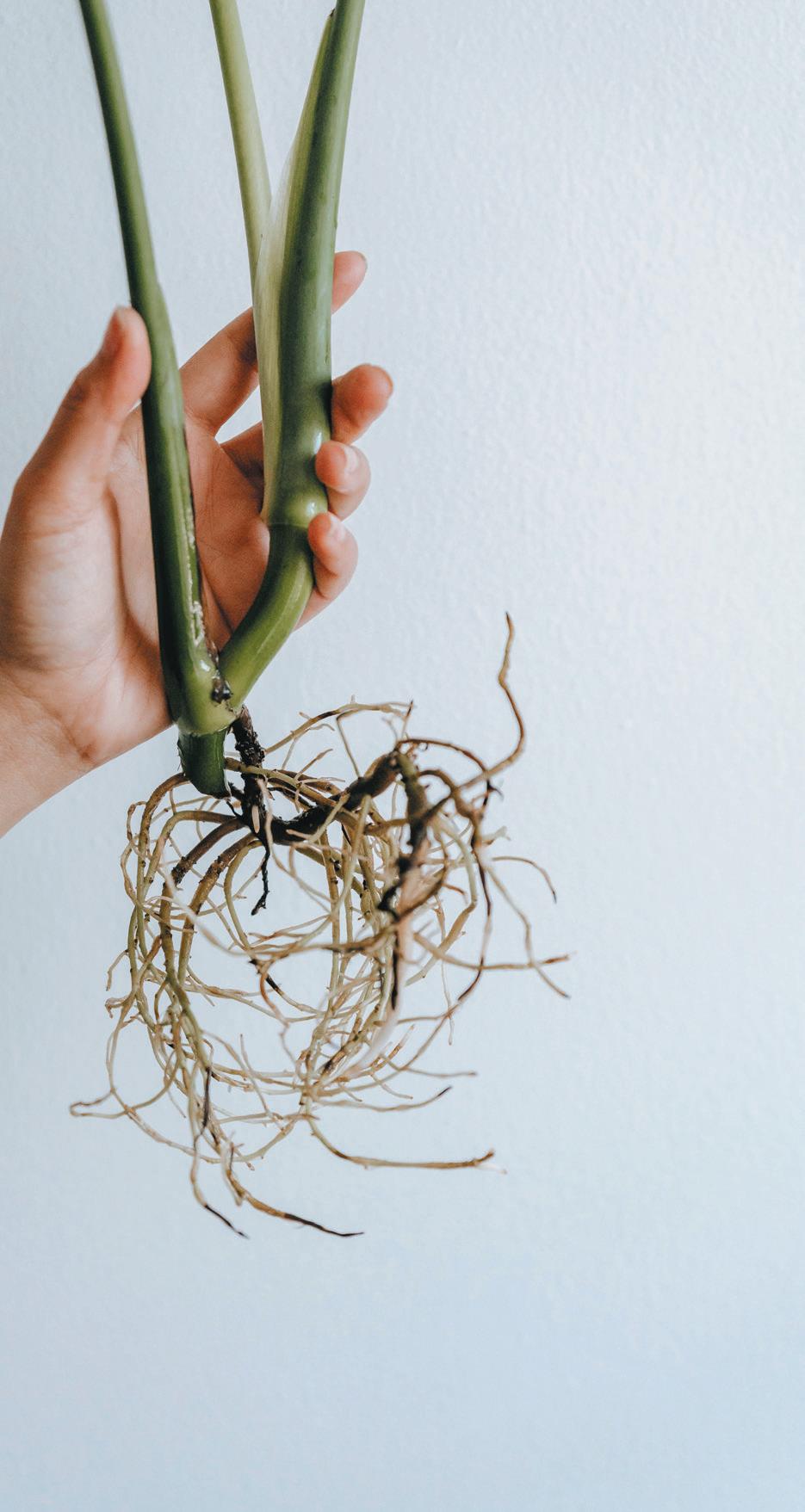
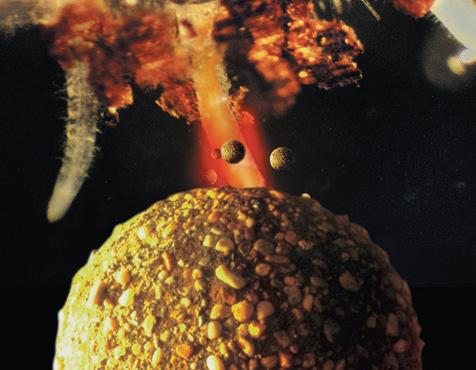
Like us, plants sometime need a little help digesting—and that’s where CANNAZYM comes in. This concentrated, enzyme-rich formula speeds up the process of breaking down dead root material, stimulates new growth and activates beneficial microorganisms. CANNAZYM also helps plants take up more nutrients and increases their resistance against diseases and pathogens such as pythium. Even better, it’s stable, consistent, safe, and easy to use for beginner and professional growers alike.


CANNAZYM targets dead roots and turns them into minerals and sugars—which the plant then uses for food. Consisting of more than 12 different kinds of enzymes, vitamins, and plant extracts, CANNAZYM is scientifically formulated to improve the uptake of nutrients, stimulate new root growth and boost your plant’s defence system.
CANNAZYM also helps prevents bacteria and harmful mould. Dead roots form an ideal environment for moulds— which pose a big threat to healthy roots—and can stress the

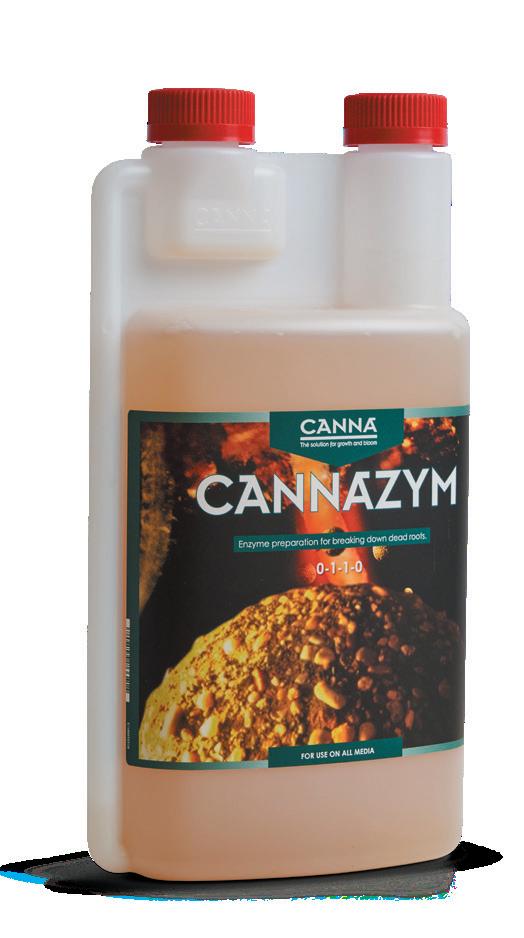
entire plant and stunt new growth. Root hairs in particular tend to die off when plants receive too much water and can become an attractive source for bacteria, fungus and some insects. In turn, these nasties can bring a load of pathogens which roots need to fend against. By quickly breaking down decaying dead root material, CANNAZYM limits the risk associated with pathogens.
If you’re a hydroponic gardener, CANNAZYM is indispensable—and will save you time and money, as well as boosting yields. CANNAZYM is perfect for when you plan to reuse substrates for growing. Dead roots in the substrate will be rapidly broken down and transformed into advantageous nutrients, infection and contamination will be prevented, and the air/water balance in the root environment will be improved. What’s more, CANNAZYM isn’t just an indiscriminate sanitiser like peroxide—it actually feeds beneficial micro-organisms, helping nutrient absorption along and optimising the physical properties of the growing medium by improving its aeration and water diffusion.
GIVE CANNAZYM A TRY TODAY –TRUST US, YOUR ROOTS WILL THANK YOU.

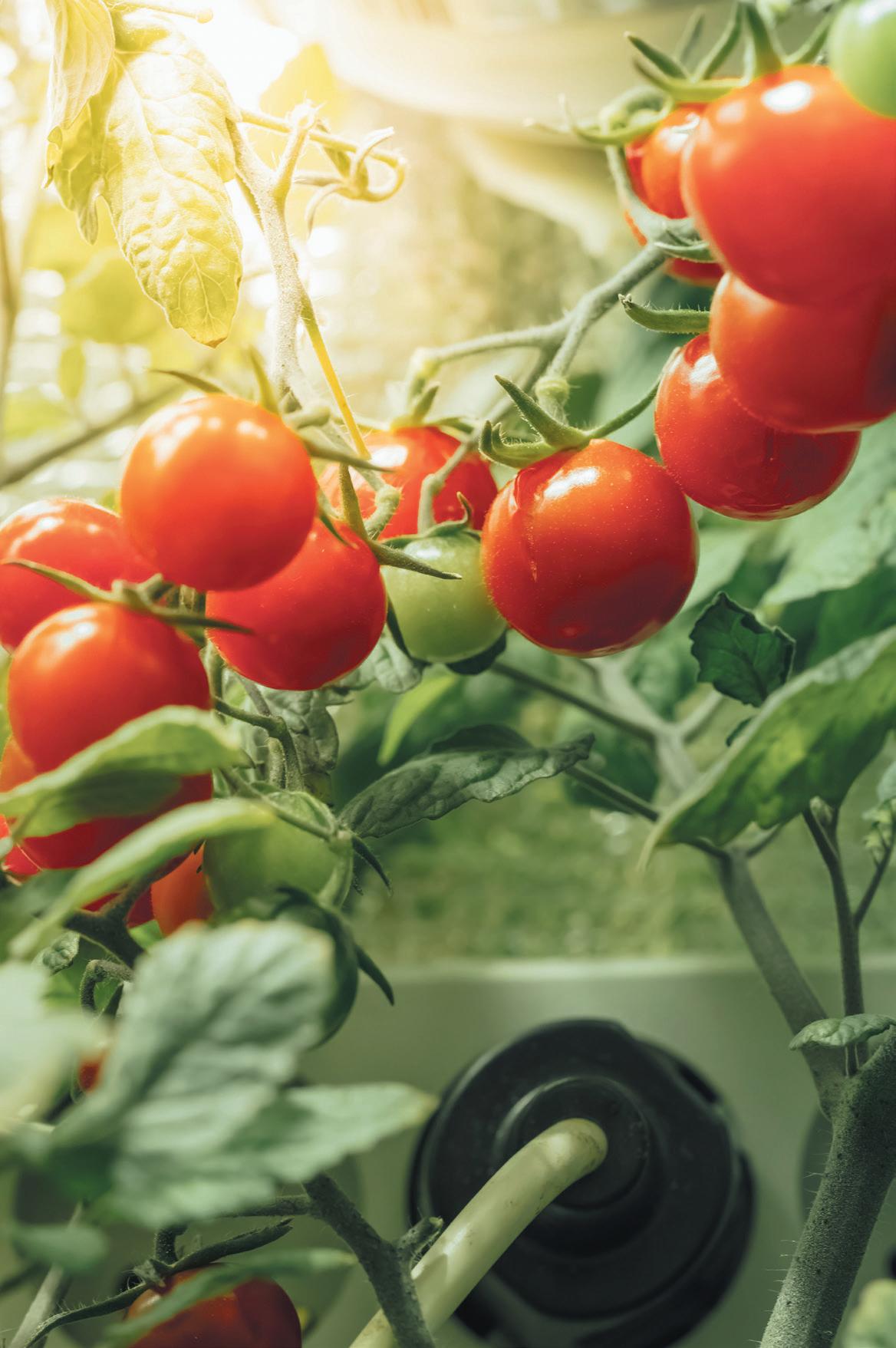
• Vegetative and generative stage: 2.5 ml/L
• Growing medium re-use, in the last 7-14 days: 5 ml/L
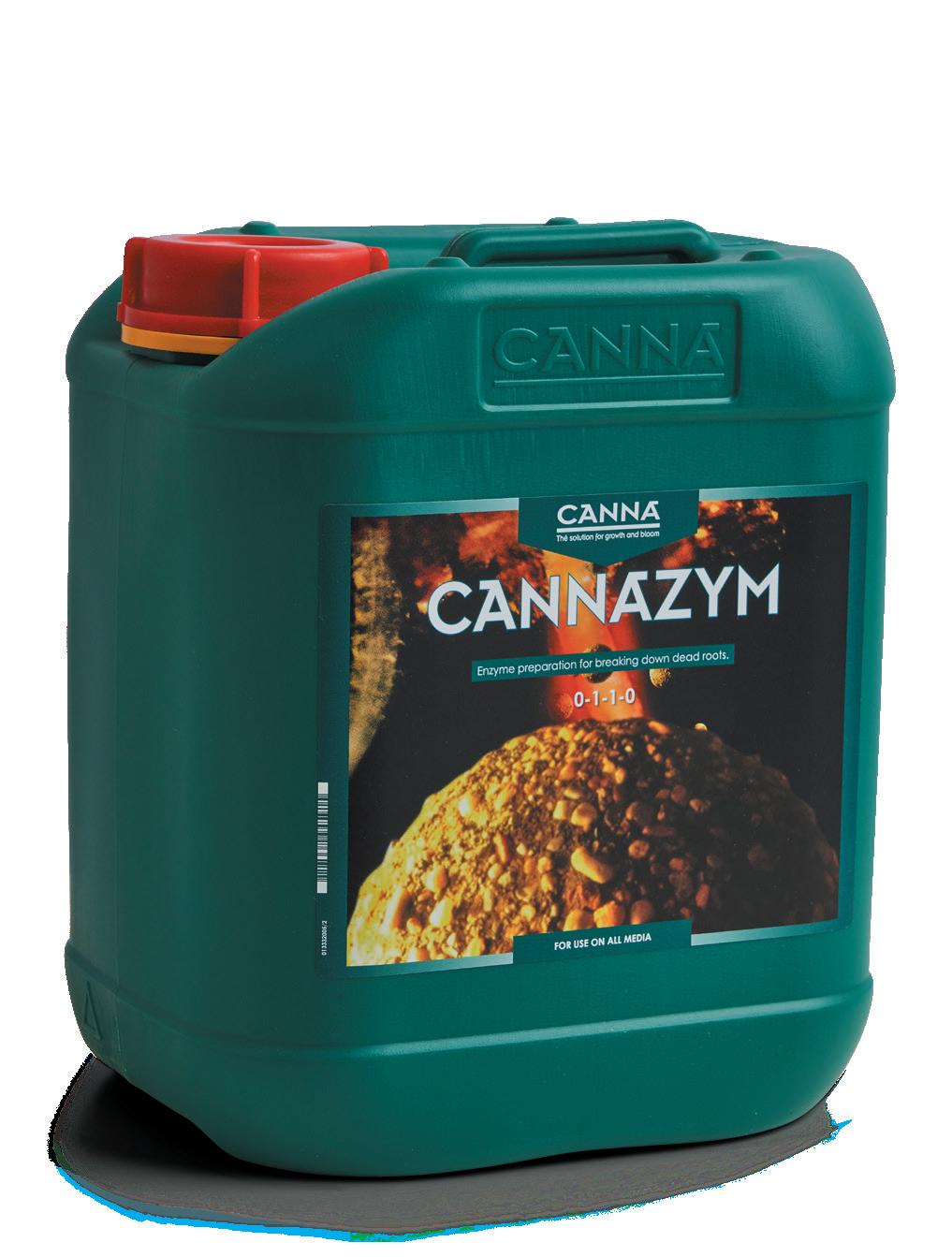

The world under our feet is a fascinating place. We dish the dirt with our top ten facts about soil.

25%
= the amount of the world’s fossil fuel emissions absorbed by soil every year

the amount of the earth’s water held in soil





= happiness
(studies suggest soil microbiomes may contain antidepressants)


1gram of soil
= 5,000 different types of bacteria
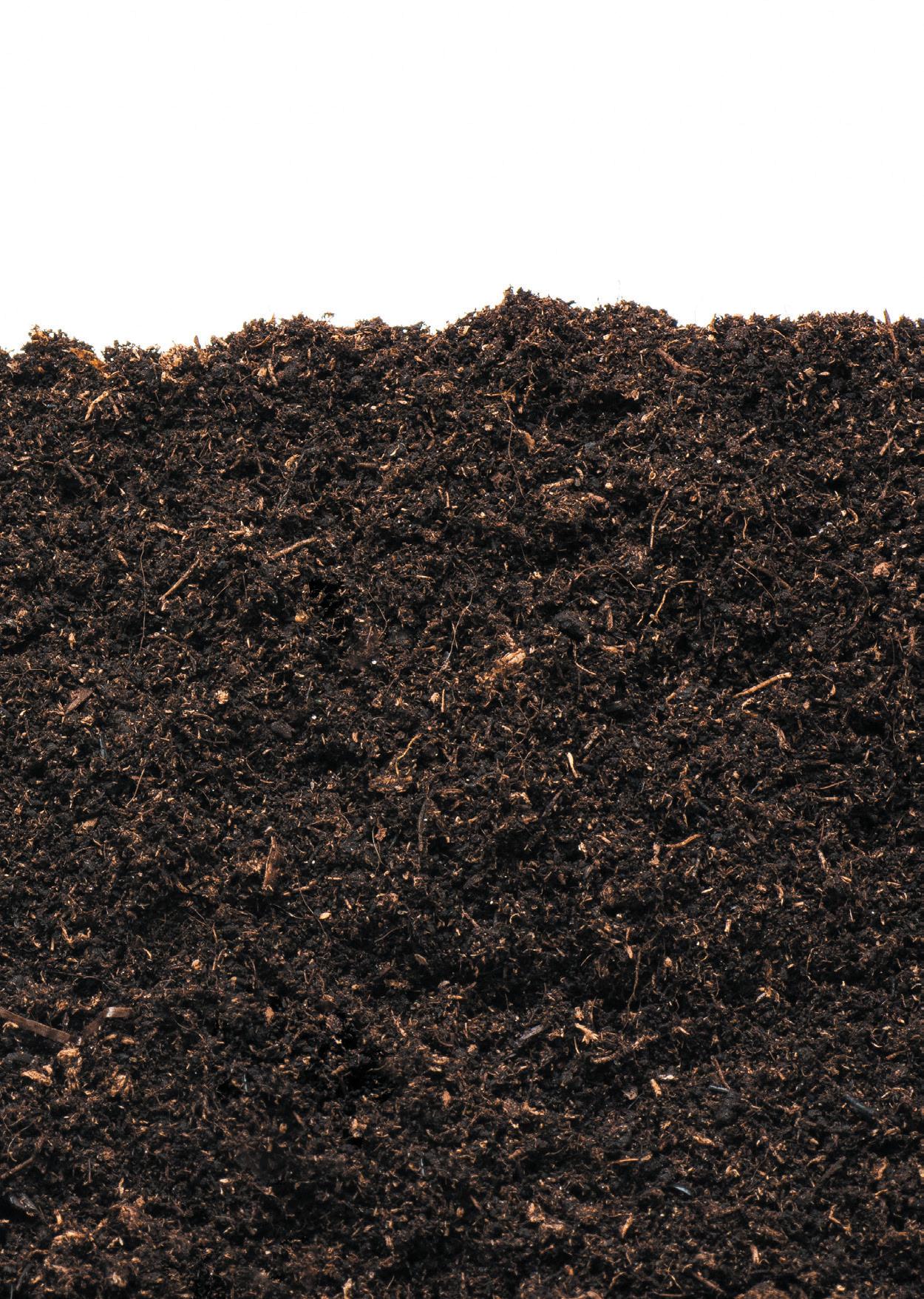
33%
= the amount of soil across the world that is moderately to highly degraded
1tablespoon of soil = more micro-organisms than there are people on earth.
58%
= the average a crop yield increases when using soil carbon sequestration techniques

1hectare of soilhealthy upto7 mi l l i o n smrow =

Short on space but still keen to bring some green to your home? Wall gardens could be the answer you’re looking for. These remarkable vertical systems can transform any fence or balcony into a living wall—creating everything from an edible garden to a spectacular floral display to a subtle, shady fernery.
Even better, they are as productive as regular gardens, but require much less weeding and maintenance, as well as providing privacy and covering up blank, ugly walls.

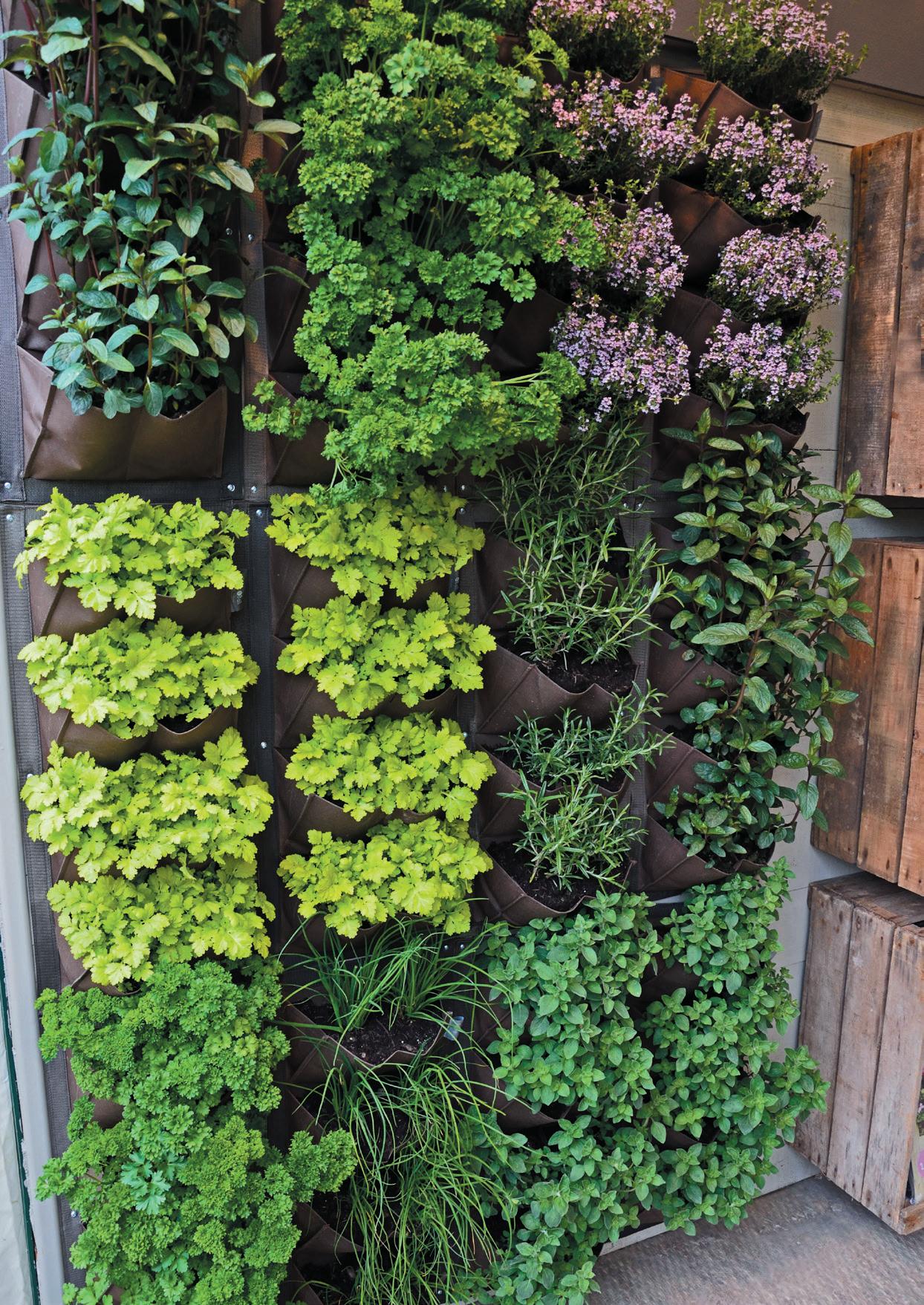
There are a few things to consider when planning your wall garden—including the amount of time and effort you want to put in. Vertical gardening can be as simple as mounting some containers or pots and filling them with soil and seedlings or hanging a trellis and training a passionfruit up it, or as complex as constructing and hanging a big frame from scratch, and installing your own grow lights and irrigation systems.
When designing your vertical garden, remember that the amount of sunlight and warmth your wall or fence receives will make a big difference to the types of plants you can grow. Does your wall get direct sunlight and if so, how much, from what direction and at what time of the day? Or is it inside away from natural light?
The answers to these questions should influence what types of plants you choose for your wall. Most veggies will need at least six hours of sunlight to grow well, so shady walls facing east or south or inside gardens may be better suited to leafy greens and herbs, or other low-light plants, unless you also choose to invest in a grow light. Walls painted in light colours can reflect the sun and help create a better microclimate for vertical gardens with these aspects.


West facing walls are real scorchers, taking the full brunt of the afternoon sun— choose succulents, cacti or other heat loving species and remember that fruit and veggies will need lots and lots of water and may require shading in summer. If you’re lucky enough to have a wall or fence facing north, you’re in luck—these are ideal for growing pretty much anything! However, heat retention should be taken into account—things
like tomatoes will love the extra warmth, but cooler climate plants may wilt in the heat.
Watering is another important consideration. A wall garden can dry out fast because they often contain far less soil than conventional beds, so make sure to consider how often you’re at home to water it.


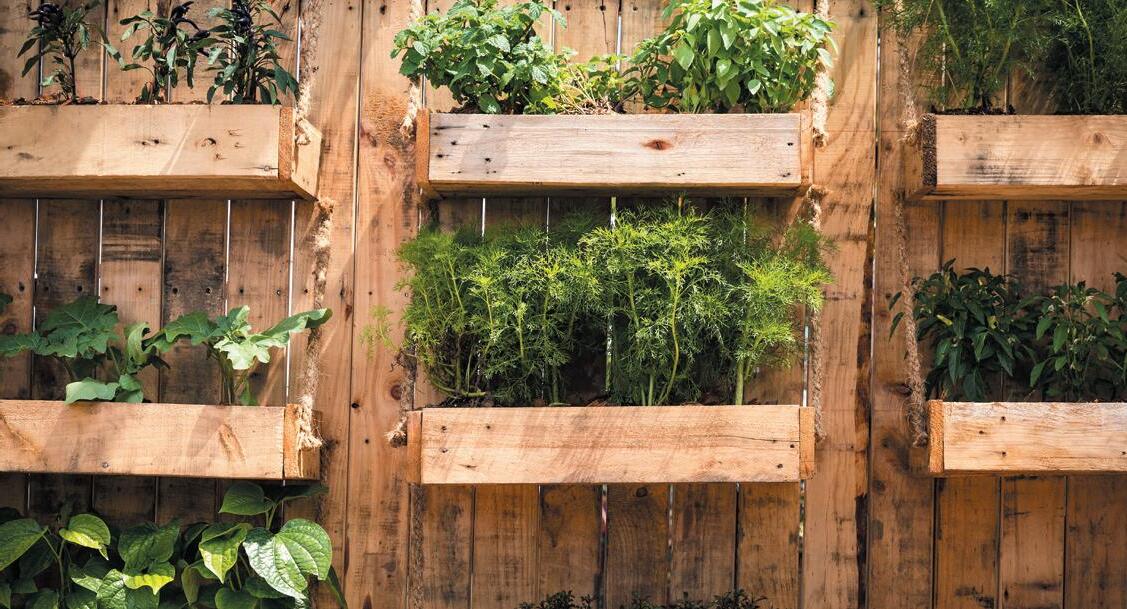
Also, think about how high your wall garden will be—can you easily reach the top to pour water in, or would an irrigation system work better?
Wall garden irrigation is easy to set up—a simple tube running across the top of the wall that drips down through the garden will do the trick. There are a variety of inexpensive systems on the market for this purpose.
Remember also that plants at the bottom will receive the most water (thanks
gravity!), so place less thirsty plants at the top and water hungry varieties at the bottom.
Once you’ve thought about light and water, it’s time to get building. Although wall gardens come in a huge variety of shapes and sizes, the most conventional method is to build a simple rectangular frame to hang off your wall. Don’t forget to think about the strength of
(CONTINUED)


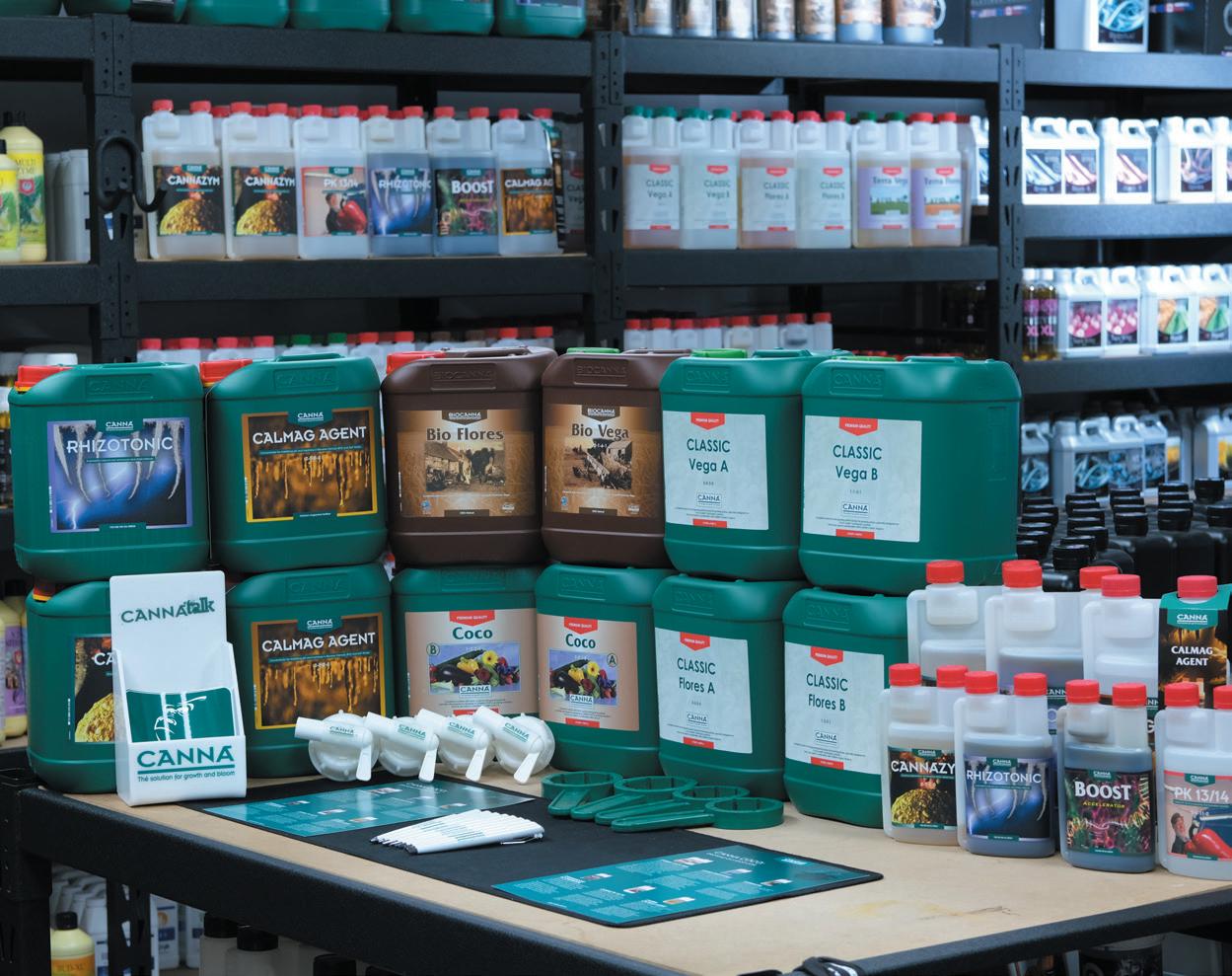
Hydro Experts has grown from a small retail outlet to one of Australia’s largest online hydroponic megastores.
Our success is primarily due to our in-depth technical knowledge, combined with our extensive range of the best-known quality horticultural products.
We cater for everyone from the hobbyist grower, to large scale commercial operations that demand high levels of technical knowledge with fast, hassle-free shipping Australia-wide.
Hydro Experts’ staff are dedicated to total product support and customer satisfaction, by providing relevant and easily accessible information, whilst stocking a wide variety of quality horticultural products available at unbeatable prices.
You can check out our extensive range at www.hydroexperts.com.au
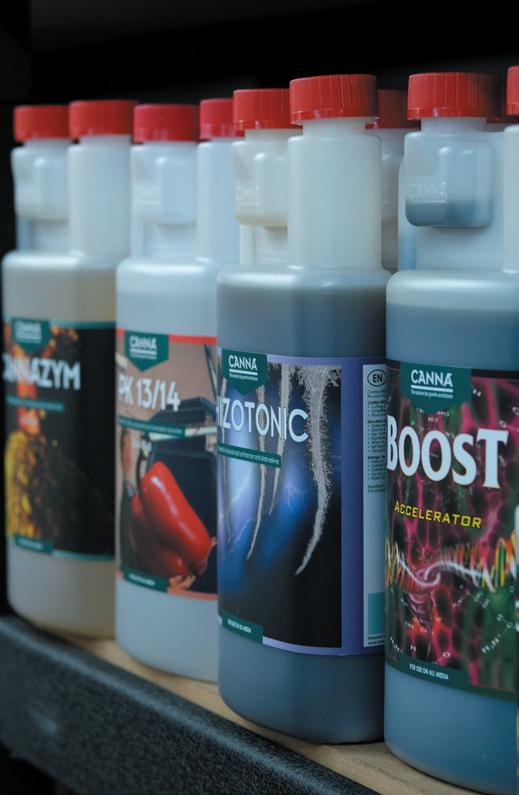
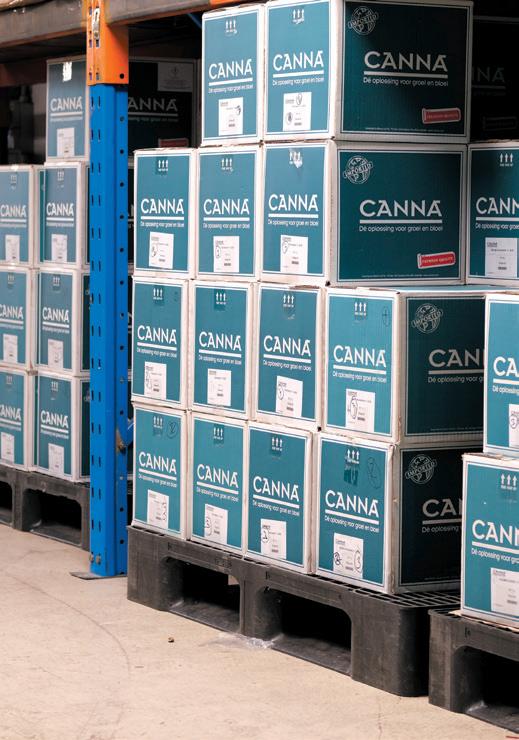

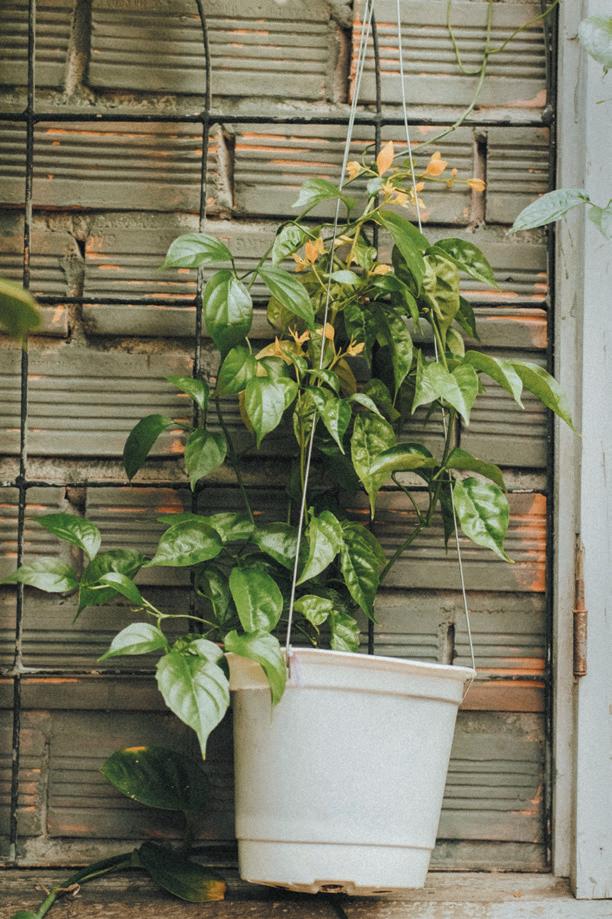

(CONTINUED)
your wall, how you will attach your garden to it and what’s underneath that might get wet at this point.
Once you’ve got your frame, you can use it to hang pots and planters, or line it with plastic and two layers of fabric such as garden felt for the plant roots to cling to. If choosing the latter design, staple the two layers of felt onto the plastic lined frame, then simply cut a slit in the top layer of felt and insert your plant’s roots between the two layers, stapling the felt around the bottom to keep them nice and snug.
Then it’s simply a matter of planting your garden!
Again, consider what you want from your vertical plot. Is it something pretty to look at when you’re relaxing after a hard day, or do you want to be able to pick herbs and veggies for dinner? If you opt for an edible wall, choose climbing food plants like peas, beans, cucumbers, berries and tomatoes. Many other veggies can be trained to climb a wall by snipping off lower shoots as they grow.
Just don’t forget to fertilise!
Put your foodie know-how to the test with our fun quiz!
1. What is the only edible fruit from the bromeliad family?
2. What is the only fruit with seeds on the outside?
3. Are avocados, pumpkins and rhubarb fruits or veggies?
4. What beloved fruit is technically a herb?
5. What two fruits are anagrams of each other?
6. Name three types of fruit that are related to roses.
7. What was the first vegetable to be grown in space?
8. What sauce should really be called a jam?
9. What was the largest fruit ever recorded?
10. THE CARROT. THE MODERN-DAY ORANGE CARROT WAS CULTIVATED BY DUTCH GROWERS IN THE LATE 16TH CENTURY.
7. A POTATO, IN 1995; 8. TOMATO! (IT’S A FRUIT, AFTER ALL.); 9. AN ATLANTIC GIANT PUMPKIN, WEIGHING IN AT MORE THAN A TONNE;
THE LOOK OF A PINECONE WITH THE FLESH OF AN APPLE; 2. STRAWBERRIES; 3. AVOCADOS AND PUMPKINS ARE TYPES OF FRUIT (BECAUSE THEY HAVE SEEDS). RHUBARB IS TECHNICALLY A VEGGIE!; 4. BANANAS (THEY GROW ON PLANTS, NOT TREES); 5. LEMONS AND MELONS; 6. APPLES, PEACHES, PEARS, CHERRIES, RASPBERRIES, STRAWBERRIES ARE ALL MEMBERS OF THE ROSACEAE FAMILY;
10. What orange veggie was originally purple? ANSWERS: 1. PINEAPPLE. THE WORD COMES FROM EUROPEAN EXPLORERS IN SOUTH AMERICA, WHO THOUGHT THE FRUIT HAD


Microgreens have been called the toddlers of the vegetable world, and are harvested and eaten as soon as the plant’s true leaves emerge—anything from 7-21 days. These tiny seedlings are grown until they are between 2.5 to 8 cm, then snipped off at the base and eaten, adding a sweet, savoury, bitter or spicy tang to a wide variety of meals and drinks.
With the notable exception of the nightshade family of veggies (potatoes, tomatoes, capsicums and chillies), which have toxic leaves, almost any edible veggie can be enjoyed in microgreen form.


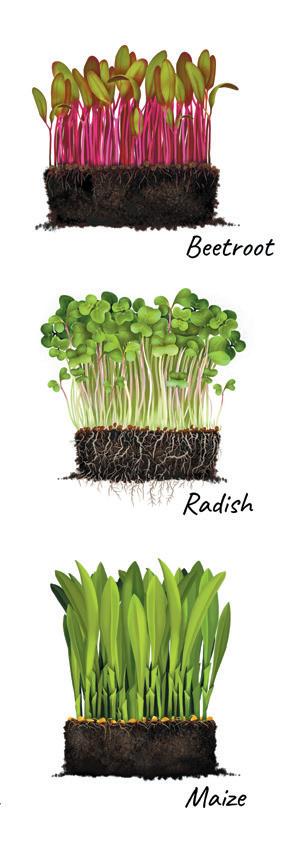
Microgreens are simple to grow, inside the home or out, and better yet, don’t take up much time, space, or money. But! You will need to make sure they have plenty of light—preferably 12-16 hours per day (whether sunlight or artificial).
To get started, source some good quality seeds (avoid those that have been treated with fungicide), a seed tray with drainage holes, seed raising mix and a spray bottle.
Pop about 4cm of soil in the tray and sow the seeds thickly, then press them down gently and cover with a thin layer of soil.
Water the seeds with the spray bottle then cover with a lid or plastic bag (with some holes for airflow) until you spot tips of green popping up.
Once the microgreens sprout, remove the lid or bag and move to a sunny spot and water regularly (at least once a day).
Chop the seedlings off with a clean blade or scissors any time after the first leaves appear (between 1-3 weeks, depending on the variety) and enjoy!
One of the tricker garden nasties you might encounter, Fusarium wilt (or ‘the yellows’ as it is sometimes known) is a harmful, soil-borne pathogen caused by certain species of fungi, which, if untreated, can lead to plant death. The fungi affect a wide range of common fruits and veggies, including tomatoes, potatoes, eggplants, bananas, legumes, melons, cucumbers, zucchinis and pumpkins. Symptoms include drooping leaves, followed by stunting, yellowing, defoliation and rot. In many cases, only one branch or side of the plant will show symptoms.
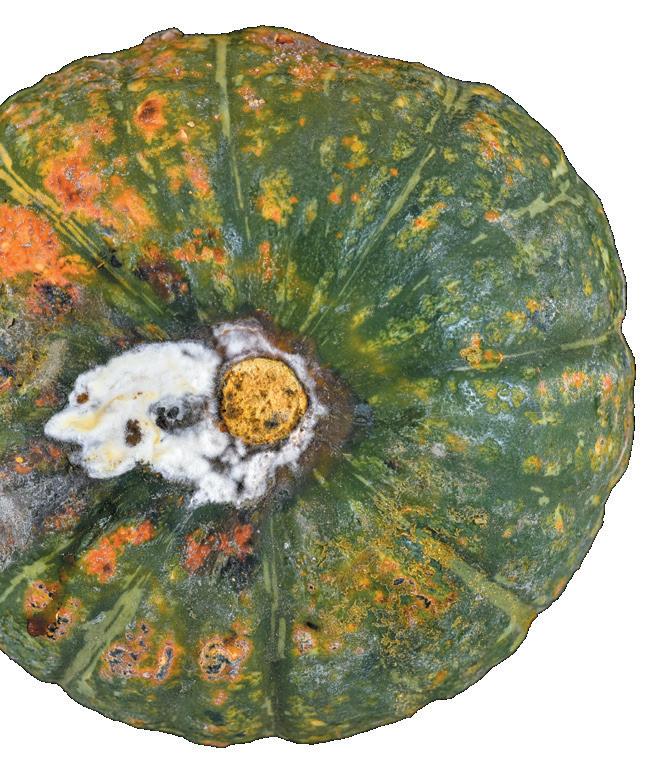


Entering through the plant’s roots, the Fusarium mycelium grows through the roots until it reaches the xylem, before spreading throughout the vascular tissue of the whole plant. Bit by bit, the fungi limit the plant’s water and food uptake, the leaves wilt, and the plant eventually dies. Unfortunately, the fungi that causes Fusarium wilt can survive for long periods in most soil types and a wide range of environments—from arctic, to tropical, to desert, though it prefers warm, moist soils. It spreads through contaminated soil, infected seeds and plant material, as well as water droplets, some insects and garden equipment. Because of this, controlling Fusarium wilt can be very difficult, however, there are several things you can do to prevent and manage this insidious disease.
(CONTINUED)
• Ensure healthy soil conditions. Avoid overwatering and ensure good drainage, as the fungi spreads faster through warm, soggy soils.
• Plant resistant cultivars of susceptible plants
• Avoid over-fertilising with nitrogen or phosphorus
• Remove and destroy infected plant tissue to prevent overwintering of the disease
• Use systemic fungicides to eradicate the disease from the soil
• Sow clean and disease-free seeds
• Maintain good hygiene practices by regularly sterilising your garden tools
Learning to spot the symptoms of the disease in the early stage is the most effective practice for preventing the spread of Fusarium. If you do see the tell-tale signs in your crops, it’s best to go in early and go in hard.


Roots are one of the most important parts of any plant—and knowing how they work and what they need is vital to maintaining a heathy and productive garden.
Usually hiding away out of sight under the ground, the roots are the part of the plant body that secure it in the earth and absorb water and nutrients from the soil. Occasionally, roots store the plant’s reserve food (these roots are often good to eat—like carrots and radishes), sometimes, they help trees breathe (as with the roots of mangroves), and sometimes they also function as above ground support (like the buttress roots of rainforest trees).
(CONTINUED)




A typical plant root system shows four distinct regions or zones: the root cap; the cell division region; the region of elongation, and the region of differentiation. Each part of the root performs specific functions.
THE REGION OF DIFFERENTIATION
This area develops when the cells of the elongation zone differentiate and mature into specialised tissues such as root hairs, endodermis, and cortex. This part of the root (which is also known as the region of maturation) is key for keeping plants and trees attached to the soil and also where the root hairs grow—helping the plant to absorb and conduct water and nutrients from the soil.
THE REGION OF ELONGATION
The next part of the root is called the region of elongation. This area helps to increase the length and size of the root’s cells and aids in the absorption of water and minerals from the soil, but cells here are no longer capable of division.
The cells behind the root cap are always dividing—endlessly renewing and growing as the root delves into the soil or growth medium. The most important plant hormones are produced here, in the region of cell division. This region (also known as the meristematic region) is located a few millimetres above the root cap. The cells of this region are small, thin-walled, and contain dense protoplasm.
The root system will increase in volume for as long as the plant continues to grow. When a certain equilibrium has been reached, the plant will simply maintain its volume, while the roots continue to grow, but will begin to die back as well, maintaining balance. This balance point usually comes when around 50% to 70% of the flowering period has elapsed (for example, week six of a 10-week growing cycle).
PRIMARY ROOT

SECONDARY ROOT
TERTIARY ROOT
Invisible to the human eye, root hairs are where most of the plant’s nutrients and water are absorbed. With their large surface area and length and ability to penetrate between soil particles, they make the plant’s feeding and drinking processes highly efficient. When the plant is short of water and/or nutrients, it will devote more assimilates (photosynthesis energy) to producing more cells in the root tip. This process also generates more root hairs until the root has found what the plant needs. Eventually, the oldest root hairs will die off, and are quickly replaced by new ones.
The tip of the root is protected by a structure called root cap. The root cap is very hard and protects the growing point. It is so hard, in fact, that it can break and grow through asphalt if the cap has enough energy. The function of the root cap is to protect the growing tissues in the root and carry water and minerals from the soil.
A general rule of thumb is that the root system should comprise 30% of the total plant volume. Although this rule applies fairly consistently to plants in the open air, in substrate culture this does not always have to be the case.
One of the most important elements of root care is to ensure you are giving your plants the right amount of water—too much, and they’ll drown or be prone to harmful bacteria, fungi and disease, too little, and they’ll die of thirst. It might seem counterintuitive, but continued exposure to waterlogged conditions causes root hairs to die, meaning plants lose their

capacity to absorb water and nutrients. (The dying-off of root hairs also happens after repotting the plants or after moving them very roughly.)
There are a few different ways of testing how wet your soil is, including sticking your finger in and seeing if it comes out dirty! A slightly more scientific method is to purchase a moisture sensor, which can be found in hardware stores and nurseries. In potting mix and soil cultures, plants can absorb up to 5 to 6 litres of water/ m2 per day. But in hydro cultures more water can be absorbed with fewer root tips.
In hydroponic cultures, fewer roots are needed in order to grow a larger plant. This is because each root hair can absorb more water and nutrients. This is one of the reasons that hydro culture has the potential to produce higher yields. In practice, as the growth medium dries out, the root starts looking for water and will produce more cells, and thus more root hairs. Absorption capacity increases, because more root hairs are produced.
This is why the general advice is to grow on the dry side: when you overwater, some of the root hairs become redundant. To limit the energy loss, the oldest root hairs will die off, which reduces the efficiency of your plant. In this scenario, an enzyme-rich formula, such as CANNAZYM, which speeds up the process of breaking down dead root material, stimulates new growth and activates beneficial microorganisms, will greatly boost the health of your roots.
Learn more about roots and root care at www.canna.com.au


Just scan the QR code and answer some simple questions on our








What a time to be alive at Summernats #34 in Canberra, January ‘22!
Four days of burnouts, mullet comps and mayhem as CANNA got down and dirty with the street champs and spectators for some longawaited action on the asphalt.






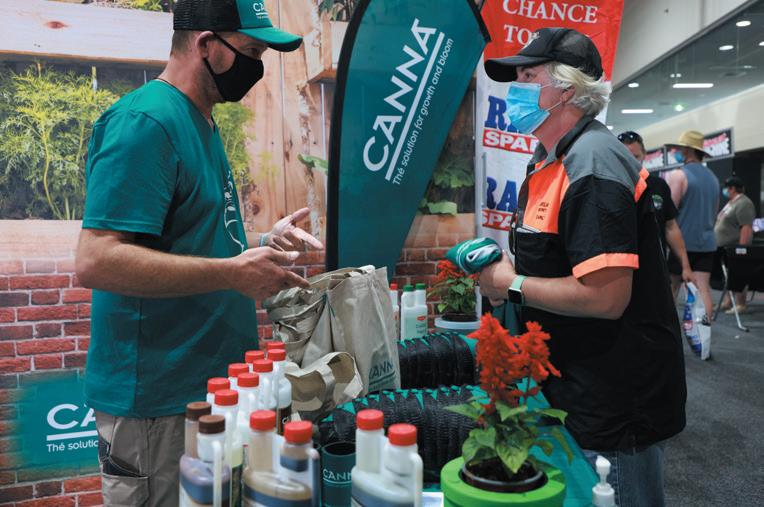
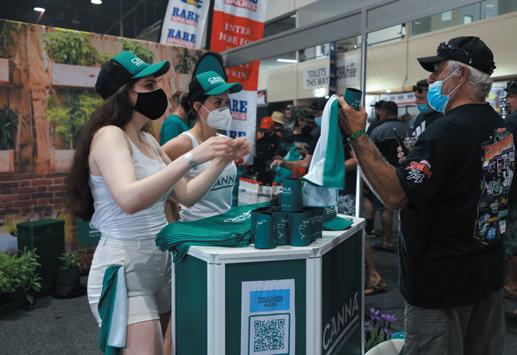








Q: I love CANNA Classic nutrients for my hydro set-up but having recently moved to a new place with a little courtyard garden, I’m keen to try my hand at gardening with soil. Can you tell me what CANNA nutrients you’d recommend for pot plants?

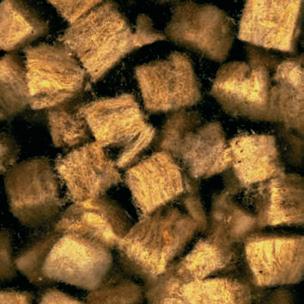
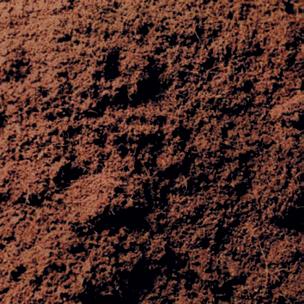

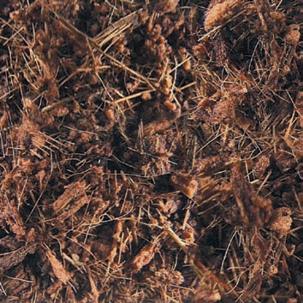

A: CANNA has four nutrient types—Terra, Coco, Classic and Aqua. Each one is specially formulated to be used with different mediums for optimum plant growth. For pot plants, we recommend using Terra Vega—it helps plants absorb water and food, right from the very start. This is because Terra Vega is rich in nitrogen compounds, high value iron chelates and trace elements. It’s also prefect for reviving potting mix that has been used before or is nutrient deficient.
Whatever growing style you choose, be it field grown, hydroponic run to waste, hydroponic re-circulation, or an organic based medium (for example: peat lite mixes, coco or mineral soil), it’s vital to consider the plant you want to grow, your space and your own ability as a gardener first. These factors will determine the best method to use as well as the appropriate medium to grow in.
Once you’ve decided on your growing style and growing medium, CANNA has the right nutrient to match your system. Terra Vega pairs with Terra Professional and other potting mixes, CANNA Coco combines perfectly with Coco Professional, CANNA Classic goes with rockwool, while CANNA Aqua couples with Aqua Clay pebbles.
Feeding plants can be confusing, but with our easy-to-use nutrients, CANNA has made it simple! You can find out more at www.canna.com.au/mediums_for_growing
Happy Gardening!
